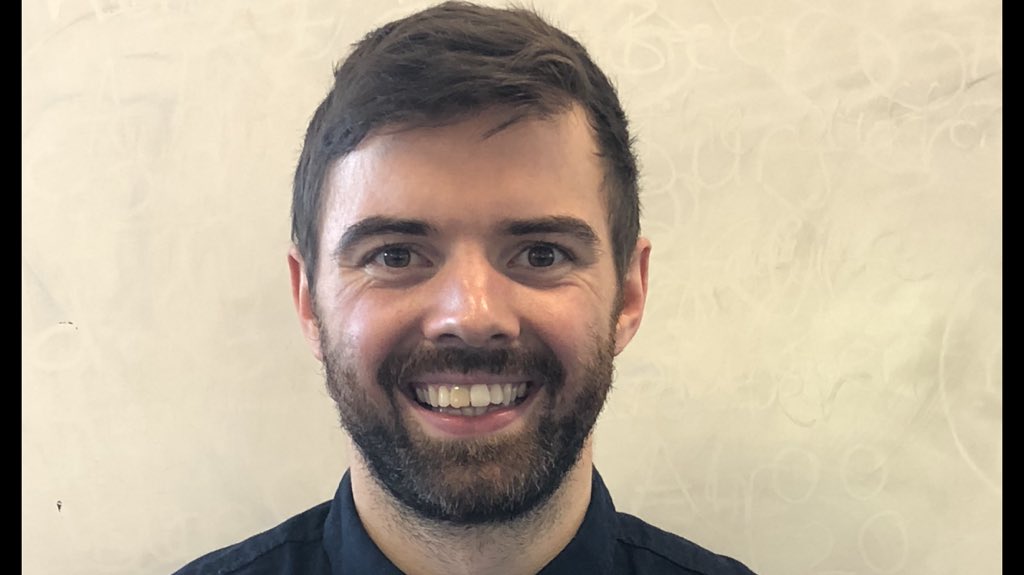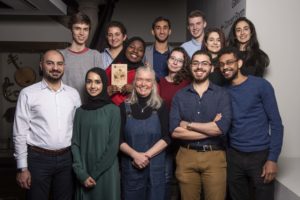Never too early: the Primary Teacher embedding the environmentinthe curriculum

“Yes, basic literacy and numeracy skills are vitally important. Yes, we need to get children ready for the world of work. However, they’re going to need a world to work in.”
Blair Minchin graduated from The University of Edinburgh’s Moray House of Education and now works as a Primary School teacher. He tells us more about his inventive methods of embedding awareness about sustainability in his teaching.
As a teacher, we are always being introduced to new things. New hands-on technology things; new wellbeing tracker things; new assessment tool things; new procedure things. And then there was that other thing…but I’ve forgotten what it was because I’ve been too busy looking at career-long professional learning things of late.
Of course I jest. Teachers are some of the most dedicated professionals I have ever known. They are research-informed, reflective practitioners continually honing their craft and adapting their methods to suit their learners and prepare for the world of tomorrow.

Some of the upcycled materials Blair uses for teaching
Learning for Sustainability is relatively new for teachers. Launched in 2013 whilst the profession was still trying to get to grips with the Curriculum for Excellence rolled out 3 years earlier, there is still much to do before their goals are realised.
https://twitter.com/Mr_Minchin/status/1141017226998407171
Whenever teachers are introduced to a new resource, we get to play around with it. This is for two reasons: it’s fun, and we need to understand the capabilities and scope of any equipment before introducing it to our pupils. It’s fair to say that before we even get to teach children about the climate, recycling and sustainable processes, teachers need to consider their own practice, considering issues like:
-Does everything need laminating?
-Do we need to print worksheets in A4?
-Are there systems in place for pupils to recycle?
-How are we conserving resources and equipment?
-What are we doing with the biscuit wrappers in the staff room?
Change starts with us. Once we understand why learning for sustainability is important and the small ways in which we can impact the planet, then we will be better placed to plan learning and teaching on the subject.
Sustainability can be discussed and integrated into every area of the curriculum. It should be a fluid, continual discussion within the classroom as opposed to stand-alone lessons. Everything from ensuring we are using paper conservatively, to taking the time to find that lost lid that has wandered away from its whiteboard pen.
Want to teach music but scared of the schools box of tuned percussion from the early 90s?
How about taking your class outside and teaching them to create musical patterns?@BBC_Teach @BBCScotland @edutopia @TeacherToolkit @pedagoo @edublether @youthmusic @PrimaryRocks1 pic.twitter.com/KcmXuSSpE6
— Blair Minchin (@Mr_Minchin) August 19, 2019
That being said, STEM subjects lend themselves very well to developing an understanding of sustainability. Whether it be creating hanging gardens from old plastic bottles so as to study the life cycles of plants or creating tents out of cardboard, testing their durability and discussing the prospect of using them to save the waste left behind from music festival-goers, there are endless possibilities for teachers.

A ‘garden’ that Blair’s students made from materials that would otherwise go to waste.
Ultimately, learning for sustainability should not be seen as a ‘topic’ that is covered for a term once every three years. Climate change, pollution, waste – these things cannot be an afterthought for educators.
Yes, basic literacy and numeracy skills are vitally important. Yes, we need to get children ready for the world of work. However, they’re going to need a world to work in.
Habits are hard to develop. However, they are also hard to break. If we can develop our children to become fluent in sustainable practices, then that truly is something they will remember for the rest of their lives.
Read Blair’s recent feature by BBC Scotland
Read the HWRK, the online magazine Blair contributes to





Recent comments